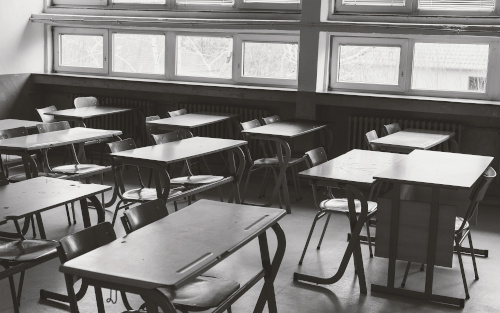Flexible learning environments have been a popular buzzword for a while now. Traditionally, flexible learning environments address the flexible use of the physical space as well as how time during classes might be used and how students are grouped during learning. Now, school leaders and educators also have to consider switching between in-person learning and remote learning, and how that applies to the learning environment in place.
When Walled Lake Consolidated School District in Walled Lake, Michigan, standardized classroom technology about five years ago, it transformed our instruction. It became clear the next step was to modernize the furniture and classrooms.
Our district went through an extensive process of brainstorming and researching the best approach for renovations, including district leaders attending conferences, testing out several products with their teachers, and discussing feedback and ideas with each other. Throughout the process, it was important for us to prioritize the idea that every student learns differently. With this in mind, we ultimately decided flexible learning environments would be the best solution throughout the district.
Pivoting the purpose
The districtwide transformation was initially divided into four phases, and schools have been going through renovations the past few years. Teachers at the renovated schools started seeing an increase in student engagement and finding easier ways to encourage students to participate. However, the pandemic threw a wrench in the plan to update classrooms to bring students together to collaborate more. Everyone found new ways to safely utilize the new learning spaces as we returned to in-person learning.
Currently, as the principal of Mary Helen Guest Elementary School and preparing to go through renovations this summer, I’ve had the chance to learn from other schools the insights and lessons they’ve learned pivoting their collaborative learning spaces this past school year.
Below are three things to consider when using flexible learning environments next school year and how school leaders can support school staff.
1. Provide PD opportunities
Just as we know students learn differently, it is important to remember teachers learn and teach differently, too. The past 15 months forced more professional development for teachers than any school leader could ever imagine providing, and leaders must find ways to continue to build off of what was learned and how to use what was learned.
As teachers prepare for another school year that will look different, it is important to provide an ample amount of options for teachers, including trainings and professional learning. In order to use the new learning environments to their fullest potential, teachers need to know what everything is and how they can use it. Some of this PD includes demos on new technology in the classrooms, or lessons on how to weave it into the class content. It is important to provide these opportunities to teachers and to make sure they are comfortable in their new teaching environment.
2. Break down barriers to promote engagement
In addition to providing PD opportunities for teachers, it is also important to share best practices. This upcoming school year is a unique opportunity for us to share the best practices we have heard from other schools already using flexible learning environments as we enter our first school year with these classrooms.
One of the greatest things other schools have noticed about the learning environments is how they break down the barriers in the classroom. When you have the flexibility to redesign the classroom and break down the physical barriers, it helps encourage more student engagement. Teachers are able to move furniture and desks around easily to open up the classroom or bring students together. This was especially helpful this past school year for classes to easily and safely spread out.
With fewer barriers in the classroom, teachers are finding easier ways to encourage student participation. For example, our school has Epson BrightLink interactive displays in every classroom and teachers can easily project content wherever they are in the classroom. With the help of the Microsoft display adapter dongle, teachers aren’t stuck at a desk with their laptop connected to the BrightLink. Instead, teachers have rolling stand up desks to allow more flexibility when they want to move around the room. This open concept makes it easier for students to walk up and interact with the content. It’s a great opportunity to increase interaction and participation among students.
3. Encourage creativity outside the classroom
In addition to giving teachers the opportunities to creatively use classroom space, it is also important to encourage this creativity outside of the classroom. This was recently exemplified when a couple of the science teachers approached me with their plan for creating an outdoor science education area and how to have it ready for the fall. As a principal, this kind of risk taking and innovative thinking is what makes my job easy. It is always encouraging when educators come to you with a clear plan and explanation on the new and creative ways they want to teach subjects like agriculture and earth science.
Continuing innovation
As everyone had to quickly pivot during the pandemic, it is just as important we take the time to reflect on the successes. This summer will include a lot of preparing for fully returning in the fall, but it is also important to carry over the best practices we learned in the past 14 months.
- It’s time to pay student teachers - April 25, 2024
- The evolving requirements of a K-12 school network - April 24, 2024
- A bungled FAFSA rollout threatens students’ college ambitions - April 24, 2024

